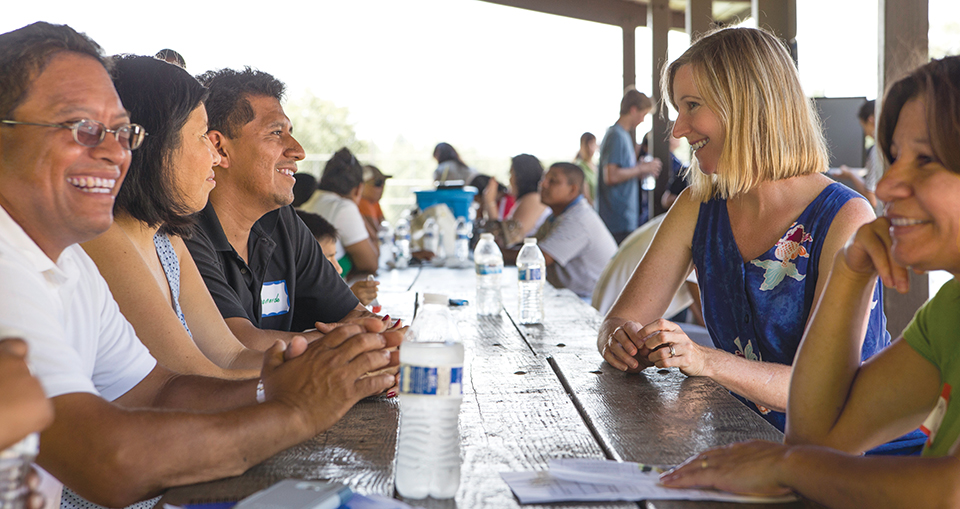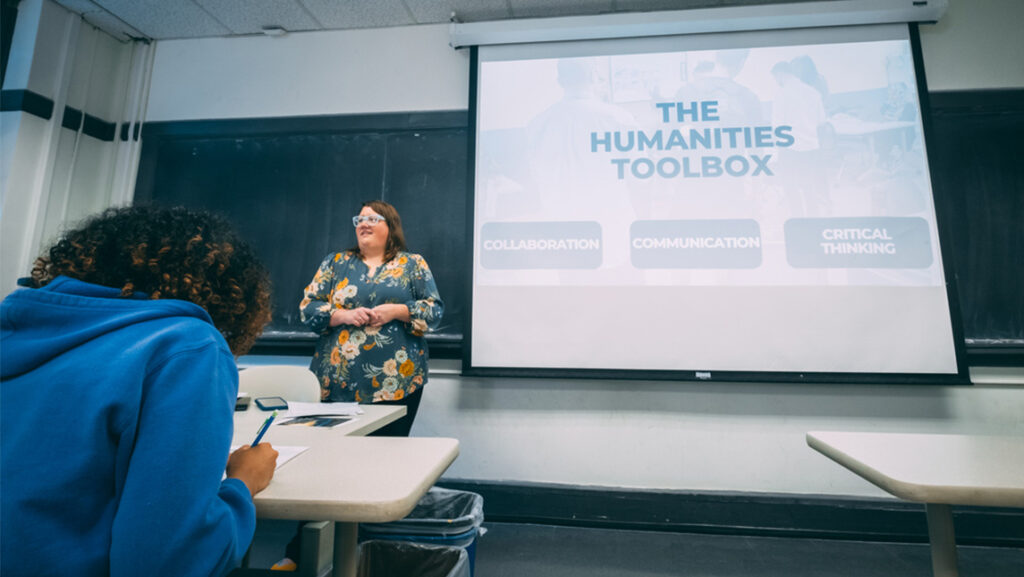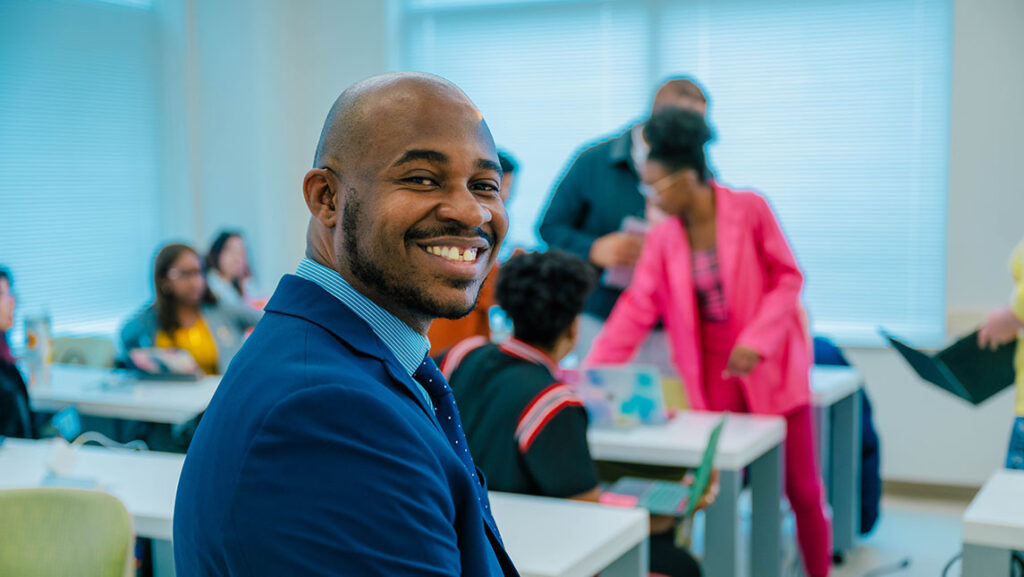Redacted from “Breaking down Barriers,” a fall 2016 Research Magazine feature
When Dr. Laura Gonzalez began teaching Latino parents in Asheboro, N.C., about the college admissions process for their children, she recreated a typical classroom setting. She stood in the front of the room while her 30 adult students sat and listened attentively.
Then as Gonzalez learned more about her students – one was a seamstress with a sixth grade education – she realized they needed to shake up the format. “We were approaching the program too formally – we needed to meet them where they were.”
Since her arrival at UNCG in 2009, Gonzalez has focused on understanding the Latino immigrant community and using what she learns to help parents and their children. The associate professor in the Department of Counseling and Educational Development began collaborating with Dr. Gabriella Stein, associate professor of clinical psychology. Their interviews with Latino adolescents about their experiences in schools and at home informed Gonzalez’s current outreach program.
 Talking with more than 100 students individually and conducting focus groups with about 20 parents produced a consistent storyline – parents want to be more involved with their children’s education, but are not familiar with the U.S. educational system; and children wish for more assistance from their parents, but understand their limitations.
Talking with more than 100 students individually and conducting focus groups with about 20 parents produced a consistent storyline – parents want to be more involved with their children’s education, but are not familiar with the U.S. educational system; and children wish for more assistance from their parents, but understand their limitations.
“Latino parents are in this unusual bind where maybe they moved to this country hoping for better futures for themselves and their kids, so emotionally they’re very supportive, but as far as understanding how to help their kids get there, they don’t know the steps,” says Gonzalez.
Her findings inspired her to create an outreach program with several department colleagues to help parents understand educational access.
Starting in 2012, the first phase of the program consisted of a two-year pilot for parents in several locations, including Asheboro City Schools and the High Point Latino Family Center. It was funded by the College Access Challenge Grant Program and UNCG’s Coalition for Diverse Language Communities. Gonzalez, fluent in Spanish with help from her husband, a native speaker, shared teaching duties with Donna Weaver, Spanish language coordinator for the College Foundation of North Carolina.
When they realized they were “too wordy,” as Gonzalez describes their teaching style, their approach changed. “It became more interactive and more personal, with less focus on passing along information and more on community building and getting comfortable with one another,” she says.
Gonzalez continues to refine that approach in Winston-Salem, N.C., where the Kate B. Reynolds Trust has provided three years of funding for her project, Padres Promoviendo Preparación. Groups have shrunk to 10 to 12 parents, making it what she calls “a more personal model of psychoeducation.”
In its first two years, Padres Promoviendo Preparación has reached more than 100 families in Forsyth County. It has expanded to two high schools, two churches, and a community services center. Group facilitation is provided by teachers, pastors, and others affiliated with the organizations, as part of efforts to prepare community partners to continue the program after UNCG’s involvement ends.
“Embedding the program in these community locations creates a bigger ripple effect and greater longevity,” Gonzalez says.
“There are few programs out there focusing on Latino parents currently,” she says. But that’s changing. “We’ve had inquiries from people in other states, interested in replicating what we are doing.”
Redacted from “Breaking down Barriers,” a fall 2016 Research Magazine feature by Chris Burritt



